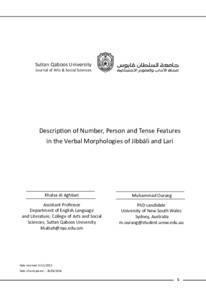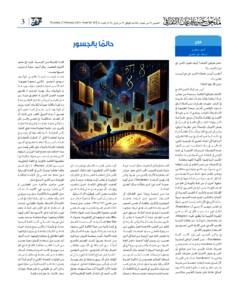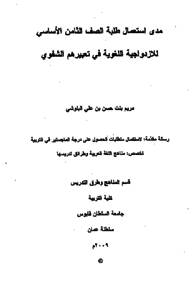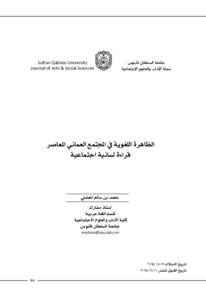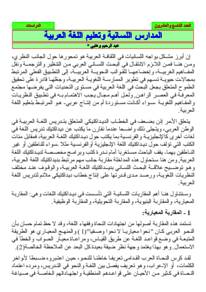Document
Description of Number, Person and Tense Features in the Verbal Morphologies of Jibbāli and Lari.
Contributors
Ourang, Muhammad., Author
Publisher
جامعة السلطان قابوس. كلية الآداب والعلوم الاجتماعية
Gregorian
2017
Language
English
Subject
English abstract
The study describes a few linguistic features in the verbal morphologies of two understudied languages: Jibbāli and Lari. Jibbāli, a Modern South Arabian language spoken in the southern part of the Sultanate of Oman and Lari, an Indo-Iranian language spoken in Iran, are at risk of being endangered due to the facts that (1) they lack a writing system, (2) they are not taught at schools, (3) they are not the official languages in Oman and Iran and, most importantly, (4) there is no effort recorded to preserve these languages. Therefore, the study aims at exposing the linguistic richness of Jibbāli and Lari through describing the tendencies of their verbal morphologies. This may help revitalize a substantial linguistic aspect of these languages. However, since this study is limited in space, it only focuses on certain morphological features which make these languages stand out. The researchers observe a few undocumented linguistic tendencies in Jibbāli and Lari which may attract attention for further studies. For example, Lari, unlike other Iranian languages, lacks an auxiliary on the progressive tense which is largely expressed via morphemes. Jibbāli also exhibits some linguistic tendencies manifested by having a pronoun that refers to the speaker and another (exclusive) person in the conversation. Jibbāli is also characterized by abundant verbs which exhibit internal change along with a few affixes. Where relevant, features from the verbal morphologies of the two languages are delineated with examples collected through fieldworks and personal communication. Findings revealed that Lari is, by and large, a linear language in which affixes dock on bases to express grammatical contrasts while Jibbāli is highly inflectional with verbal affixes (number, person and tense) and morpho-phonological changes. In addition, affixes were found to play a crucial role in marking tenses and mood in Lari while Jibbāli employed a dual system in marking number.
Member of
ISSN
2312-1270
Resource URL
Citation
Al Aghbariyah, K., & Ourang, M. (2017). Description of Number, Person and Tense Features in the Verbal Morphologies of Jibbāli and Lari. Journal of the College of Arts and Social Sciences, 8 (2), 5-12.
Arabic abstract
تسعى هذه الدراسة إلى تقديم وصف نظري لتصريف الأفعال في الجبالية واللارية نظرا لقلة الأبحاث حول هاتين اللغتين المهددتين بالانقراض، وكونهما أيضا لغتين غير مكتوبتين، حيث تهدف الدراسة إلى إبراز الثراء اللغوي لهاتين اللغتين من خلال تقديم وصف لبعض الخصائص اللغوية التي تنفرد بها تصاريف الأفعال في اللغتين، وخشية من الرتابة التي قد تعتري موضوعا وصفيا بحتا كهذا فإن الدراسة ستقتصر على إظهار بعض الخصائص المميزة التي تنفرد بها هاتان اللغتان، على أمل أن تقوم دراسات قادمة بتحليل هذه الخصائص وإدراجها في إطار نظري محدد. ومن الخصائص المميزة للارية أنه لا يسبق فعل مساعد الفعل المضارع للدلالة على الحدث التدرجي للحدث كما هو الحال في الفارسية والإنجليزية، بينما يدلل عليه بمساعدة بادئة لفظية تتصل مباشرة بالفعل. في حين تتميز الجبالية بوفرة الأفعال وتعدد تصاريفها التي تتميز بالعديد من التغييرات الصرفية داخل الأفعال نفسها، وتتمتع الجبالية بانفرادها بضمير يعود على شخص لا ينتمي للمحادثة. ستقوم الدراسة بوصف هذه الخصائص وغيرها ومقارنة سلوك اللغتين في كل خاصية متى ما وجدت في اللغتين معا، وذلك من أجل إحياء هاتين اللغتين عن طريق دارستهما وتوثيق خصائصها المتعلقة بالصرف، وقد خلصت الدراسة إلى تبيان أن اللغة اللارية لغة خطية تعتمد اعتمادا كليا على إلصاق إضافات مورفيمية في بداية ونهاية الأفعال، في حين أن الجبالية تقوم على التغيير الداخلي في شكل الفعل وحركته مع وجود مورفيمات صرفية تلتصق بالفعل أيضاً.
Category
Journal articles

